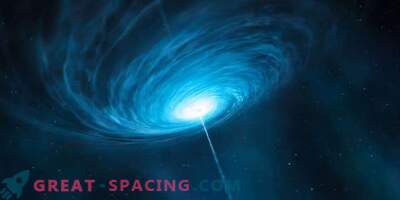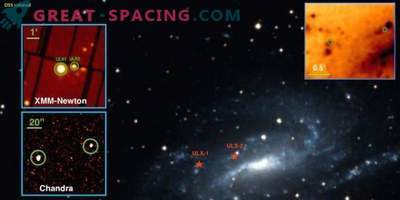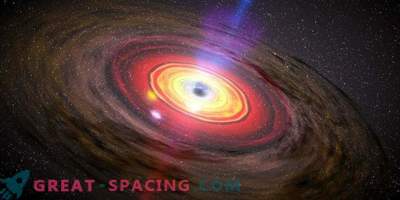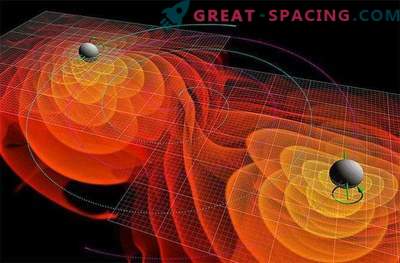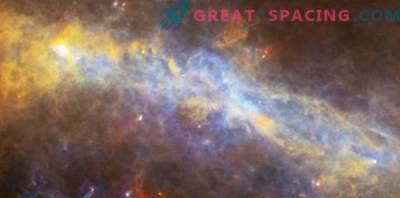
An international team of astronomers reported the detection of blazar LBQS 1319 + 0039 in hard X-rays. For the search used the NASA NuSTAR space telescope. Blazars (members of a group of galaxies with active galactic nuclei) are powerful sources of radiation in the electromagnetic spectrum from radio waves to high-energy gamma frequencies. Their characteristic features are relativistic jets directed almost exactly toward the Earth.
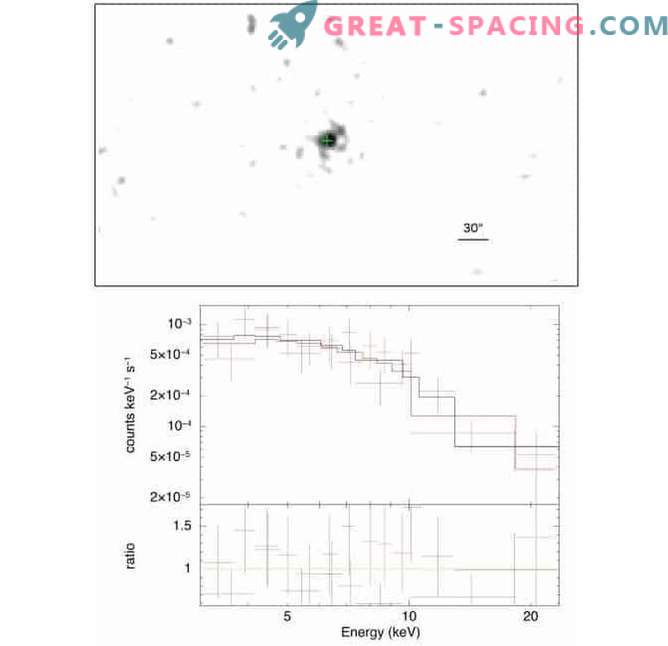
Top: Image in the range of 3-24 keV around the detected source. The green cross is the location of blazar LBQS 1319 + 0039. Below: NuSTAR X-ray spectrum for LBQS 1319 + 0039. Black and red crosses - measurements from two modules of the focal plan A and B. Black and red lines represent the best models of the X-ray spectrum, including the transverse calibration constant
In general, blazars are perceived by scientists as high-energy engines that serve as natural laboratories for studying particle acceleration, relativistic plasma processes, magnetic field dynamics, and black hole physics. Therefore, observations of blazars at different wavelengths can be useful for our understanding of such phenomena. Based on the properties of optical emission, blazars are divided into two classes: flat spectrum (FSRQ) with remarkable and broad optical emission lines and BL Lacs objects. LBQS 1319 + 0039 with a red shift of 1.62 was originally attributed to the first type. However, new observations show that it exhibits activity in hard X-rays. The survey was conducted during the study of the galaxy NGC 5104.
The analysis showed that the X-ray emission spectrum of LBQS 1319 + 0039 is consistent with the photon index 1.72, and the transverse calibration constant is 0.93. Conclusions suggest that the x-ray emission of an object seems typical of hard x-ray blazars. The exact class of the object will be determined by further research.
